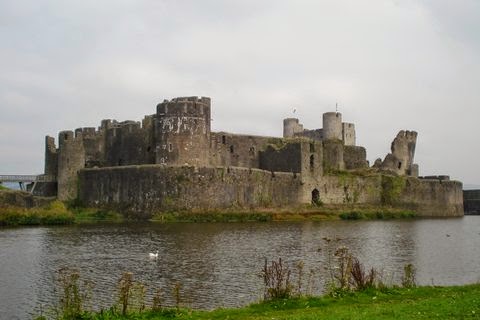I had only just arrived in Athens when I got the train up north for a few days stay in this beautiful northern city, once known as "The Paris of the North". The hotel I'd booked was conveniently located on the main street and not too distant from where Manolis' presentation would be held at the Poeta Cafe.
Manolis Aligizakis reading from his new poetry book
It was a pleasant evening and the poetry presentation was held out-doors under the trees in the plateia. There was a nice crowd to enjoy the poetry and music supplied by a talented young man who played the accordian.
The next day I set off to visit the Society of Macedonian Studies who are given credit in my novel as they were helpful with my research when I began writing SHADOW OF THE LION back in 1993.
One of the beautiful things about Thessaloniki is the long walk along the sea-front. To get there I walked through a long plateia with palm trees and greenery, lined with shops and cafes.
All along the seafront are gorgeous old neo-classical buildings, many tavernas and cafes and bustling crowds of young people -- mainly students from the University of Aristotle.
In fact, at the end of the Square, which is called Aristotle's Square, is a bronze statue of the famous philosopher who was once the teacher of Alexander the Great.
Aristotle
Aristotle Square
The spirit of Alexander is very evident in Thessaloniki, although it was not established til well after his death, named for his half-sister Thessaloniki, who was co-erced into marrying Kassandros, the man who brought down Alexander's dynasty. (It's interesting to me as all these people are featured in my novel. In fact, as I sat at a cafe in the Square I saw a table of men who resembled what I imagined my generals would be like!)
The White Tower
I've strolled the sea-walk many times before during my various research trips to the city. In the distance is the White Tower, one of Thessaloniki's famous landmarks that dates back to Byzantine and Ottoman times. Across from the Tower I spotted the impressive building that houses the Society of Macedonian Studies. At the edge of a park nearby I found a statue of Philip II, the father of Alexander the Great.
King Philip II
Society for Macedonian Studies
Alexander the Great
Right near there is a theatre and what a surprise to see a large poster advertising a production "Alexander, the Musical". I can't imagine what it would be like! After paying homage at the statue, I walked back over to the wonderful Archaeological Museum of Thessaloniki.
Vassilika Theatre
Archaeological Museum
On my very first trip to the city back in 1979, they had just put the finds of the royal tombs of Vergina on display. What a thrill that was to be one of the first to observe them! Since then the finds have been returned to the tombs and I have also viewed them there, a much more impressive sight than just seeing them in the museum cases. There are still a few Alexander-themed finds in the museum as well as other interesting artifacts.
trireme with seige equipment
pottery
Bust in style of Alexander
Marble blocks inscribed with Alexander's name
gold diadem
gold coin inscribed with Olympias, Alexander's mother
My intention was to go on a side-trip to visit Pella, the ancient capital where Alexander grew up, and one of the settings in my novel. However, my time was hurried and instead, I decided to explore the city because Thessaloniki has a long and rich history. So the next day, instead of taking the bus to Pella, I spent the morning visiting some of the places in Thessaloniki I had not seen before, in the Roman, Byzantine and Ottoman Turk parts of this amazing city.
NEXT: A Historic Walk in Thessaloniki






























































